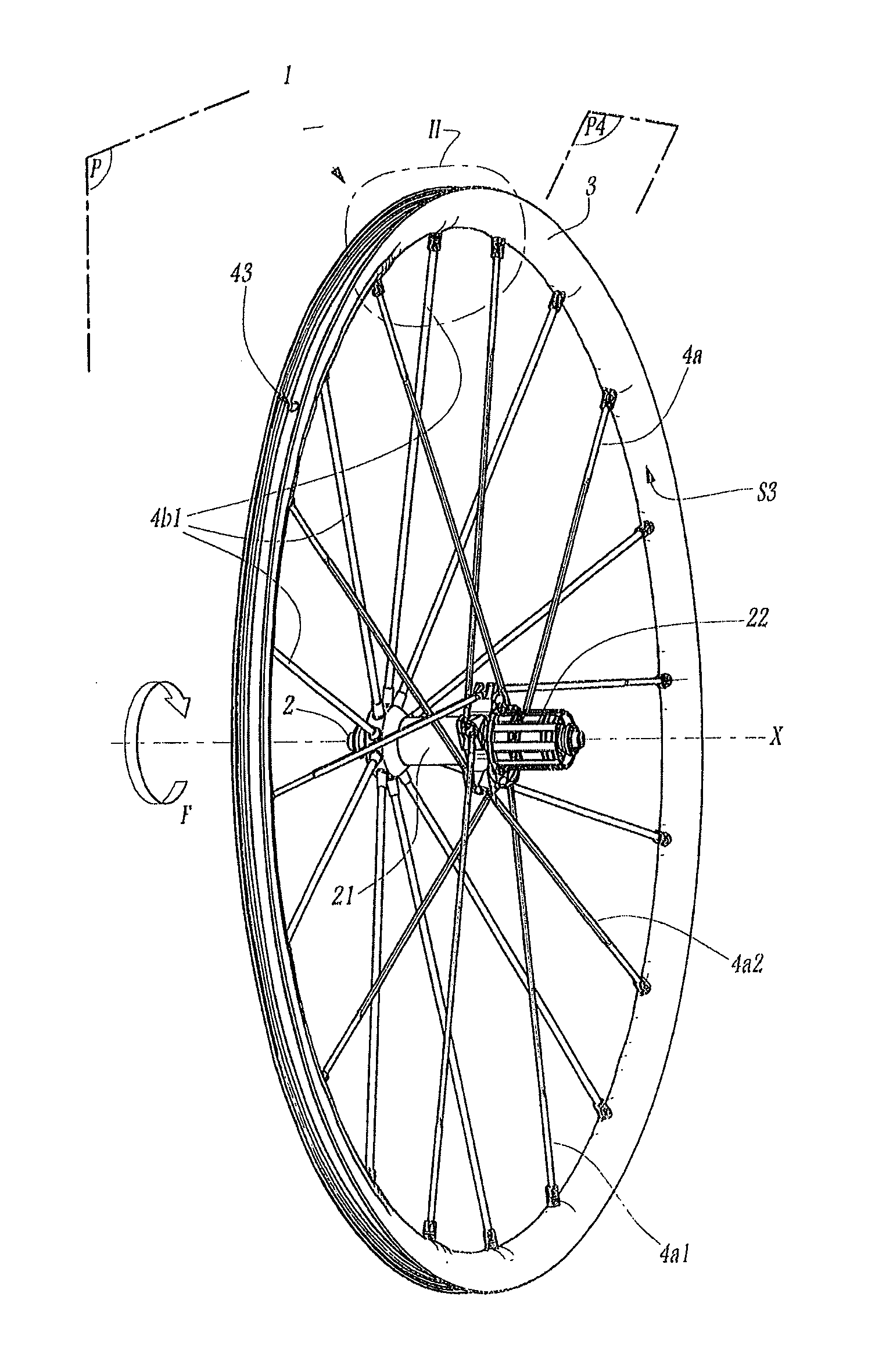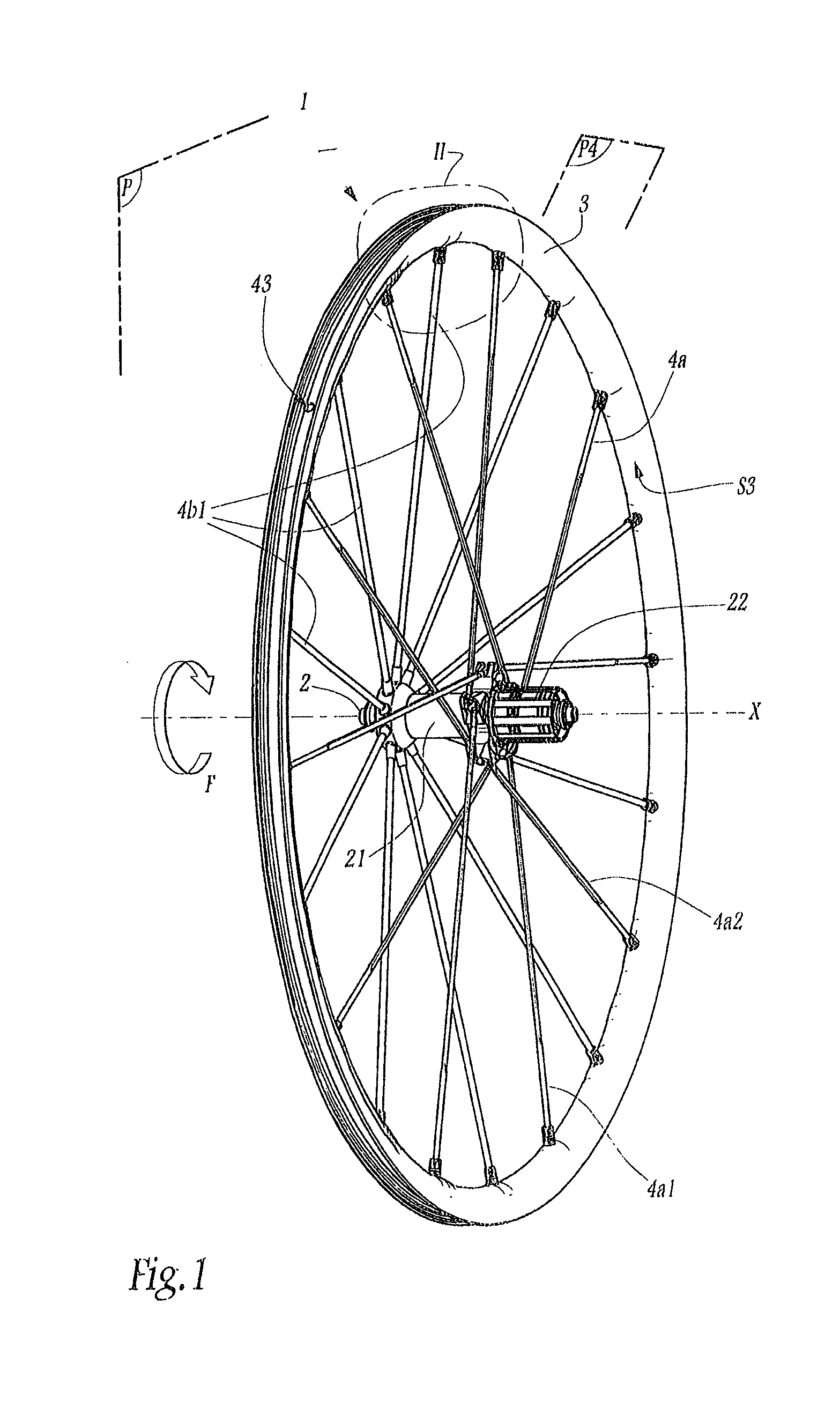Cycle wheel rim and method of manufacture
a cycle wheel and rim technology, applied in the direction of spoked wheels, cycles, transportation and packaging, etc., can solve the problems of reducing the thickness of b, breaking the extrusion die, and significant plastic deformation, so as to reduce the weight of the rim, improve rigidity, and manufacture quickly
- Summary
- Abstract
- Description
- Claims
- Application Information
AI Technical Summary
Benefits of technology
Problems solved by technology
Method used
Image
Examples
first embodiment
[0128]Similar to the rim 3, the rim 103 is divided into a plurality of zones Z1, Z2, Z3a1, Z3a2, Z3b1, which divide the circumference of the rim 103 into a plurality of angular sectors. As shown in FIGS. 12 to 15, the thickness e106 of the bridge 106 varies, depending upon the zone Z1, Z2, Z3a1, Z3a2, Z3b1 of the rim 103, in a manner similar to the rim 3 of the
[0129]The thickness e106 varies between a maximum thickness e106max, in the area of the transmission zones Z3a1, Z3a2, Z3b1, and a minimum thickness e106min, in the area of the intermediate zones Z1. In the area of the transition zones Z2, the thickness e106 is equal to an intermediate thickness between the minimum thickness e106min and the maximum thickness e106max.
[0130]The maximum thickness el06max of the transmission zones Z3a1 of the driving spokes 4a2 is greater than the maximum thickness e106max of the transmission zones Z3a2 of the non-driving spokes 4a1. The thickness e106max of the transmission zones Z3b1 of the spok...
third embodiment
[0156]The thicknesses e306 and e360 of the rim 303 and of the section 330 may be selected to be equal to the thicknesses e206 and e230 of the rim 203 and of the section 230 according to the
fifth embodiment
[0157]The following description relates to the invention, in which a rim, not shown, is made from the section 330 of FIG. 18.
[0158]The method for manufacturing this rim is generally similar to that for the rim 303. However, in the machining 1007, only a median zone Z306 of the outer surface of the bridge 306 is machined, over the entire circumference of the rim. Thus, the bridge 306 is not machined in its entirety. The median zone Z306 has a transverse width L306, measured perpendicular to the median plane P and greater than or equal to 4 mm. Thus, the bridge 306 is machined in the vicinity of all of the zones of attachment of the spokes 4a1, 4a2, 4b1, in the locations in which the mechanical stresses are the most substantial. Machining the bridge 306 only in the area of the median zone Z6 delays the appearance of cracks that might be initiated when the rim is used and subject to conditions causing fatigue. For example, it is possible to machine the intermediate zones Z1 only, or bo...
PUM
| Property | Measurement | Unit |
|---|---|---|
| transverse width | aaaaa | aaaaa |
| thickness | aaaaa | aaaaa |
| width | aaaaa | aaaaa |
Abstract
Description
Claims
Application Information
 Login to View More
Login to View More - R&D
- Intellectual Property
- Life Sciences
- Materials
- Tech Scout
- Unparalleled Data Quality
- Higher Quality Content
- 60% Fewer Hallucinations
Browse by: Latest US Patents, China's latest patents, Technical Efficacy Thesaurus, Application Domain, Technology Topic, Popular Technical Reports.
© 2025 PatSnap. All rights reserved.Legal|Privacy policy|Modern Slavery Act Transparency Statement|Sitemap|About US| Contact US: help@patsnap.com



